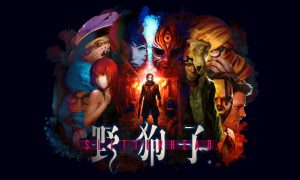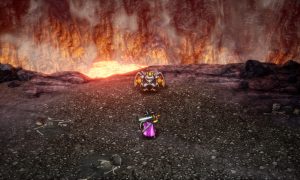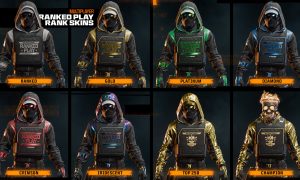
When Demon’s Souls came out in 2009, it was a breath of fresh air for many players. Featuring tough-as-nails gameplay where players were punished for their deaths, the ability to see other players in their dying moments, an unique method of anonymous multiplayer communication which players used to advise and mislead others, it became the surprise hit of the year.
Flash ahead to 2011, and we now have Dark Souls. While the publisher has changed from Atlus to Namco Bandai, the developer is still From Software and the gameplay is mostly the same as the previous game. While it’s not a direct sequel, it’s definitely a spiritual successor, and if you’ve played Demon’s Souls, you’ll be completely comfortable.
The game’s storyline is fairly simple, given to you in the game’s opening: The world was created, and dragons ruled. Over time, fire was introduced and with it humanity, and so were the Lords of Fire: Nito, The Witch of Izalith, Gwyn, the Lord of Sunlight, and the pygmy. They waged war upon the dragons, and with the betrayal of Seath the Scaleless, the dragons were destroyed, beginning the Age of Fire. As a direct result of this, humanity was afflicted with the Darksign, which would slowly cause humans to become undead. In response, humanity has chosen to exile the undead to a giant prison, which is where you come into play.
 Of course, as with Demon’s Souls previously, you start out by creating your character. You’re given a choice between ten character classes, with one of them purposefully created to make the game as hard as possible: Deprived, which starts with a club and a cheap shield and nothing else. Once you choose your class and design your character’s form, you get to choose your Gift, which can be , although it must be noted that all but one of the items (the Master Key, which the thief starts with automatically) can be found in-game.
Of course, as with Demon’s Souls previously, you start out by creating your character. You’re given a choice between ten character classes, with one of them purposefully created to make the game as hard as possible: Deprived, which starts with a club and a cheap shield and nothing else. Once you choose your class and design your character’s form, you get to choose your Gift, which can be , although it must be noted that all but one of the items (the Master Key, which the thief starts with automatically) can be found in-game.
Once your character is created, you start out in the Northern Undead Asylum, where the game runs you through basic tutorials of how to control the game and perform the various abilities possible, as well as getting you used to combat. After the tutorial, you face the game’s first boss (with the wimpiest weapon available!), a giant demon. Unlike Demon’s Souls, where you were pretty much expected to die, this time you have the opportunity to run (or kill the demon for a nice reward!).
The entire opening area is designed to get you used to game’s fundamentals, such as basic combat, item use, equipment changes and boss fights. Also, you are taught about the most important thing you’ll find in Dark Souls: bonfires. As you play, you can light bonfires which will save your location in the world and refill your Estus Flask, which allows you to heal as you go. The cost, however, is that any monsters you’ve killed (not counting special monsters and bosses) are regenerated. This is important, of course, because if you fail to light a bonfire and die, you have a long way to go to get back where you were and recover your souls.
 It’s not only that, really. The estus you get from resting at bonfires is the only source of healing in the game other than spells. This is one of the big differences between this game and Demon’s Souls. Also, the game is completely open-world, there’s no loading screens between areas (only when you die and they’re a bit long), which means knowing where the nearest bonfire is at any given point is imperative.
It’s not only that, really. The estus you get from resting at bonfires is the only source of healing in the game other than spells. This is one of the big differences between this game and Demon’s Souls. Also, the game is completely open-world, there’s no loading screens between areas (only when you die and they’re a bit long), which means knowing where the nearest bonfire is at any given point is imperative.
The third major difference is Covenants. The game features nine covenants, and each one has its own rules and requirements. If you break their rules, you can be removed from the covenant, which marks you as a sinner to the game. This can have a number of effects, including the ability to be invaded without any Also, changing covenants does the same thing, although there’s one way to do this without being labeled as a sinner. Also, the majority of the spells in the game are only purchased from various covenants.
As with Demon’s Souls, the “souls” you gain serve as your fundamental currency – what you use to buy both stat point upgrades as well as equipment. Killing things give you souls, and when you die, you lose all of the ones you had. If you manage to get back to where you were and recover your souls, you regain them, but if you die again before that…they’re gone. New to the game, however, is Humanity. Humanity is gained through a number of methods, and can either be used in a number of ways. You can kindle a bonfire to increase the amount of estus you receive (as well as grant a bonus to players on nearby games who are at the same bonfire), to make yourself human (and thus opening yourself up to attack from other online players), and to both summon other players for assistance or to invade someone else’s world to attempt to kill them.
 You can also hang on to your humanity, which gives you bonuses to a number of things, including item drops. Of course, just like souls, if you die all of the humanity is dropped. If you can return to the place you died and touch the bloodstain, you recover the humanity – otherwise, it’s gone. If you happen to die while you’re human, you become Hollowed or undead. You don’t face any massive hit point losses (like Demon’s Souls), but some game features become unavailable but you’re also safe from being invaded.
You can also hang on to your humanity, which gives you bonuses to a number of things, including item drops. Of course, just like souls, if you die all of the humanity is dropped. If you can return to the place you died and touch the bloodstain, you recover the humanity – otherwise, it’s gone. If you happen to die while you’re human, you become Hollowed or undead. You don’t face any massive hit point losses (like Demon’s Souls), but some game features become unavailable but you’re also safe from being invaded.
There’s much more to the game, including magic spells which can be purchased (usually at a great cost), upgrading your weapons and armor or even ascending your weapons into super-rare ones. There’s also a ton of secrets and hidden paths in this game. There’s no map to the game, leaving it up to you to explore the world however you wish, giving you the freedom to explore…and die.
Of course, you’re going to die. You’re going to die often, hard and fast. You’re going to die screaming, cursing the game, wanting to throw your controller. You’re going to curse and rant, taken by surprise at your latest death. You’re going to swear that you’re going to quit this game, that it’s cheating…and you’re likely going to love it the entire time. To steal a meme from roguelikes, you’ll face a lot of YASD (Yet Another Stupid Death), and you’ll tell stories about it.
 Is the game perfect? No. The game’s camera has the annoying ability to bob and get caught on scenery when you least expect it, and can sometimes cause deaths that otherwise you wouldn’t have faced. When combined with the sheer brutal difficulty the game can bring to bear on you, it can be enough to ragequit the game for a period of time.
Is the game perfect? No. The game’s camera has the annoying ability to bob and get caught on scenery when you least expect it, and can sometimes cause deaths that otherwise you wouldn’t have faced. When combined with the sheer brutal difficulty the game can bring to bear on you, it can be enough to ragequit the game for a period of time.
Also, as stated, the game is extremely hard. It’s not cheating, of course, or being unfair to you, but it is totally unforgiving of your mistakes. If you’re not paying attention, if you’re not watching your surroundings and paying attention to helpful hints left by other players…you’ll only increase the chance of your death.
Speaking of those player hints, the developers have changed how these work from Demon’s Souls, and it’s not for the better. You can read anyone’s hints, however, you cannot vote on them, nor leave your own, until you’re out of the tutorial and find the first merchant. In addition to this, you can’t see whether the votes on a note are positive or negative unless you have a certain spell. What this can lead to is massive amounts of griefing. You see a message that says ‘enemy ahead’ or ‘jump here’, and you see a lot of votes. Without knowing that the person that wrote the note is being purposefully malicious, people may follow that advice, generally leading to YASD. Actually, one case where this is insanely evil is at the first hub, Firelink Shrine. There’s an NPC there, that if you attack continuously (past where he tells you to stop), he attacks back. He’s very strong, has a lot of hit points, and is right at the bonfire. This, of course, means that if you die, he’s right back on top of you immediately. This is honestly a decision that I hope From Software patches to allow people to see positive/negative voting off the bat.
 Another issue is that the controller is very specific about following your inputs. It’s not truly a fault of the game, but if you accidently hit the attack button three times and then realize you need to roll….it’s going to attack all three times before it lets you roll. Again, this isn’t really a fault of game design as it is the game’s simple mantra of ‘be aware’ that it instills in players. Be aware of what you do, so that you don’t die. Again.
Another issue is that the controller is very specific about following your inputs. It’s not truly a fault of the game, but if you accidently hit the attack button three times and then realize you need to roll….it’s going to attack all three times before it lets you roll. Again, this isn’t really a fault of game design as it is the game’s simple mantra of ‘be aware’ that it instills in players. Be aware of what you do, so that you don’t die. Again.
Now, once you beat the game (and see either of the two endings), you also have the ability to start New Game. Your level, humanity and most items will carry over, but all monsters and bosses are reset and are more difficult than before, but you also gain more souls from fighting. Adding to the gameplay is the fact that you can do this numerous times, going New Game+, ++, +++ and so on, with jumps in difficulty between the first run and second, and second and third being the largest. With even one play through lasting anywhere from forty to a hundred hours (depending on your deaths!), there’s a lot of play in this game. If Namco Bandai is willing to leave the servers up as long as Atlus has with Demon’s Souls, then we’ll be here for a long while.
So if you loved Demon’s Souls, or like games that sadistically punish you for your mistakes, go out and pick up Dark Souls right now. If you like those types of games, and haven’t played Demon’s Souls on the PS3, then go get both (if you have a PS3). While it’s not perfect, it can be a hell of a lot of fun and is definitely worth the purchase price. Just…don’t invade my world, okay?
I've been a computer gamer since the mid 90s and have been a writer at Gaming Trend since late 2004. My primary interests are RPGs and turn-based strategy, and Japanese imports.

See below for our list of partners and affiliates:
























